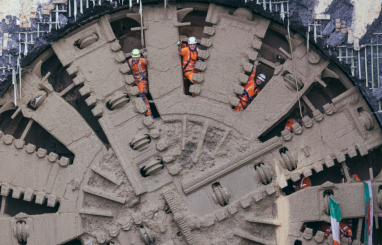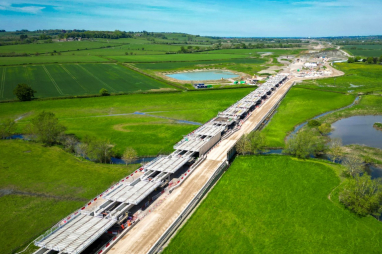- air jordan 5 island green releasing in november (2023) , SBD , air jordan 5 island green releasing in november
- air jordan 1 outlet near me
- stan smith nuud women black and blue jordan shoes - IetpShops - Adidas AdiFC Orlando Pirates
- Axel Arigato Men's Bird Tape Sneakers in Cremino, women and kids • Hanbags and accessories
- Nike Air Max 1 Ultra Moire University Red 1 Ultra Moire University Red 2 Terra Blush AJ6599 - Nike Air Max 1 Ultra Moire University Red - 201 Release Date , IetpShops
- air force 1 shadow
- nike air force 1 boot cordura black wheat university gold do6702 001
- Usher Air Jordan 11 Gold Sample
- Air Jordan 1 University Blue 555088 134 Release Date Price 4
- Air Jordan 1 Satin Black Toe CD0461 016 2019 Release Date 4
- Home
- News and analysis
- Info hubs
- Events
- Video
- Case Studies
- About us
- Magazine
Produced for the industry by the Association for Consultancy and Engineering
News
Final breakthrough for HS2’s longest tunnel

The excavation of HS2’s longest tunnel has been completed.
A second tunnel boring machine (TBM), named Cecilia, recenlty reached the northern portal of 10 mile high-speed rail tunnel under Chiltern Hills.
The arrival marks completion of a mammoth drive taking two years and nine months.
Cecilia has joined twin sister machine Florence. She arrived at the site near the Buckinghamshire town of Wendover on February 27, after completing her adjacent tunnel drive.
Between them, the two 2,000 tonne machines have built the twin bore tunnel at depths of up to 80 metres and excavated three million cubic metres of chalk.
Each machine operates like an underground factory, able to excavate the tunnels and line them with 56,000 pre-cast concrete tunnel segments, grouting them into place and moving forward at an average speed of 16 metres per day.
When HS2 is operational trains will travel through the Chiltern tunnel – the line’s longest – at speeds of up to 200mph, helping to almost halve journey times between Britain’s two largest cities.
HS2’s head of civil works for this section of the route, Mark Clapp, said the tunnel breakthrough was a “remarkable achievement”.
“Cecelia’s arrival completes excavation of HS2’s 10-mile twin-bore tunnel, but it’s only the end of the first chapter in the story of building Britain’s high-speed railway under the Chiltern Hills.
“Several years of intensive, world class engineering lie ahead of us to complete the tunnels’ four ventilation shafts plus headhouses; install the mechanical and electrical plant and machinery, slab track and overhead electrical wires before trains begin passing through at 200mph.”
Both machines launched from the tunnel’s south portal, near the M25 motorway, were operated by HS2’s main works contractor, Align – a joint venture formed of three international infrastructure companies: Bouygues Travaux Publics, Sir Robert McAlpine, and VolkerFitzpatrick. The machines are made in Germany by TBM specialists Herrenknecht.
Align’s underground construction director, Didier Jacques, said: “Ten miles is a long drive for a TBM, with a typical average being around three miles.
“The complexity and technically challenges of completing such a long drive for both our TBMs has been significant, however I am delighted that as a team, we have risen to the challenge.
“Both TBMs were designed in partnership with Herrenknecht and incorporate innovations and technologies that have been introduced on TBMs in the UK for the first time, to enhance performance and safety. This includes ‘semi-continuous boring’, allowing our TBMs to build the rings that line the tunnels without pausing.”
Each TBM is operated by a crew of around 17, working in shifts to keep the machines running when required 24/7. They are supported by over 100 people on the surface, managing the logistics and maintaining the smooth progress of the tunnelling operation.
In total over 450 people have worked on the tunnels over the last three years, including a dedicated production team who made 112,000 precision-engineered, fibre-reinforced concrete tunnel wall segments on site at a purpose build temporary factory - and a team processing the spoil from the tunnels.





